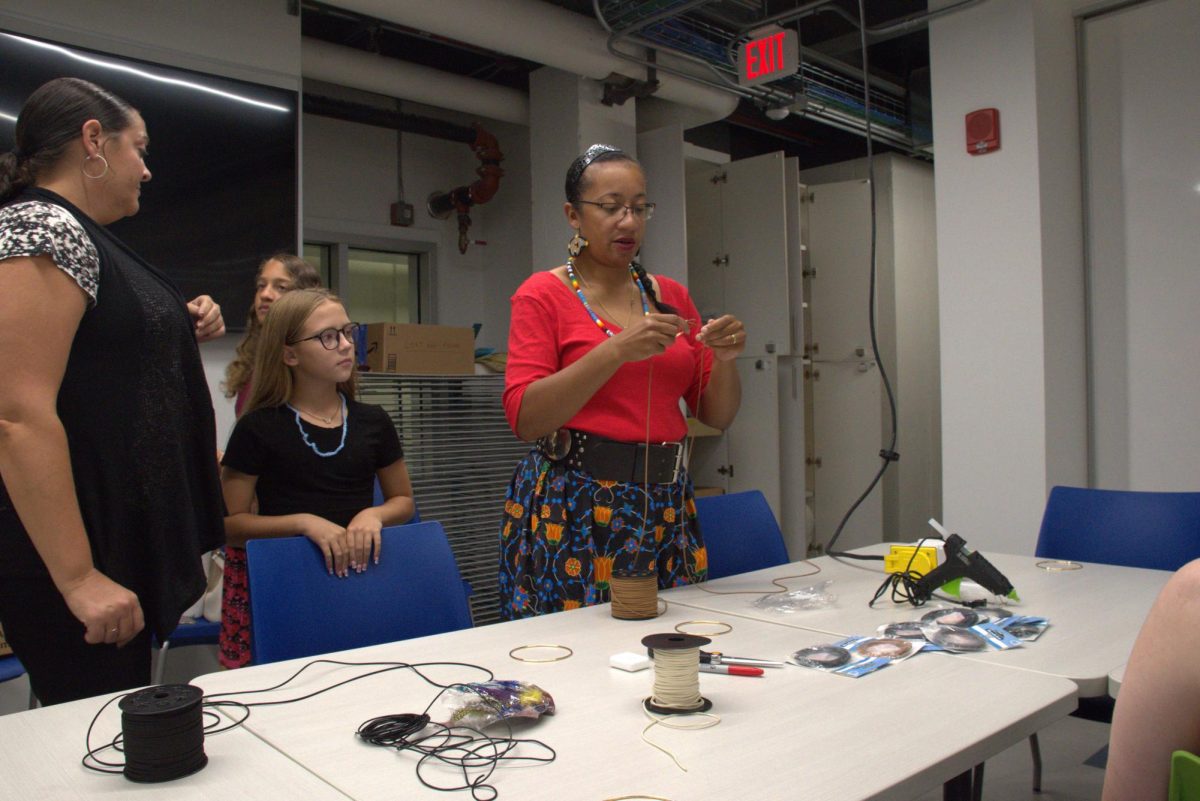The dreamcatcher is a well-known craft used to protect its owner from nightmares. During the Indigenous Cultural Festival, Pitt students found a use beyond common knowledge: building communities on campus by exploring its Native American roots.
The Council of Three Rivers American Indian Center (COTRAIC), the University of Pittsburgh’s Indigenous Community Engagement Initiative and the Center for Creativity teamed up to host one of many events that made up the annual Indigenous Cultural Festival last Thursday. This event was a hands-on workshop in the Understory of the Cathedral of Learning where participants had the opportunity to learn how to make their very own dreamcatcher.
In addition to learning how to make a dreamcatcher, those who participated in the event learned the origin of the dreamcatcher and its significance to Native American traditions.
Tessa Provins, assistant professor in the Political Science Department and co-chair of the Indigenous Cultural Festival, said she felt Pitt lacked events celebrating or recognizing Indigenous communities. This motivated her to create events like this one that highlight the heritage of Indigenous people in a relaxed setting.
“It’s really an opportunity that’s sort of low stakes and fun for people to be able to engage in Indigenous crafts with also, during that workshop, being able to learn about Indigenous culture and history and people’s experience being Indigenous,” Provins said. “It’s a nice opportunity to get to do all of those things in a fun, low-stakes environment.”
Chanel Wissner, an independent contractor who works with the Three Rivers American Indian Center, said dreamcatchers come from the Native American legend of Grandma Spider.
“Dreamcatchers are kind of a symbol. There is a legend where Grandma Spider saw that the children and men were having bad dreams,” Wissner said. “She wove her web into a dreamcatcher and told the parents to put it above the child’s bed so that the web could actually grab all the nightmares and stop them from getting the child. The tendrils, or the little decorations that hang down with the feathers, would be how the good dreams would get to the child.”
Wissner said she hopes these events demonstrate that Native Americans are still very much present and ready to share their heritage with the community.
“I want people to know we’re still here. Native Americans aren’t some mythical creature. We are just like any other culture, whether it’s Italian, South African, etc. We’re still here. We’re diverse,” Wissner said. “There’s over 500 nations here on Turtle Island, or North America. It just takes open conversation. Rome wasn’t built in a day, and how can you expect people to know your culture if you’re not willing to share it and take the time to talk to them?”
Kit Ayars, director of the Center for Creativity, said the center is grateful for the opportunity to be a part of this joyous celebration of Indigenous culture.
“The Center for Creativity is honored to be able to continue to support Pitt’s annual Indigenous Cultural Festival,” Ayars said. “It’s a privilege to provide welcoming space and relevant materials for hands-on engagement led by Indigenous people, with crafts and culture rooted in the Indigenous community’s history.”
Provins said that the team who put this event together faced no hurdles planning the festival’s events. In addition to on-campus events aimed at spreading awareness, the group expanded their platform virtually.
“Everybody has been really supportive of this. I think we feel pretty lucky about how supported we felt by the university,” Provins said. “There’s a podcast I just did with Dr. Pickett that talks about the ways the university is supporting Indigenous matters, and ways it isn’t supporting it and should be, and ways they can do that. Trying to facilitate the best relationships from within.
Wissner said her takeaway from events like these is the simultaneous sense of individuality and community they tend to promote.
“Everyone had a story to tell, and everyone put their time and energy into the dreamcatchers and made it their own,” Wissner said. “Even to see the different colors they chose for the feathers showcases the diversity of students we had here. Listening to the culture and sharing the culture creates a community atmosphere.”
Wissner said participating in events like the ones offered in this week’s festival promotes unity not just on campus, but as a community as people.
“I think a lot of us need to feel like you belong. It doesn’t matter if you have a tribal card or not. If you’re from America or you’re not. If you’re from America, you’re not from America, you’re from this hemisphere or you’re not,” Wissner said. “If we can all just sit down and create together, I think that would be a really good experience and lead to better understanding.”
Wissner said COTRAIC is proud of the work they have done thus far, but is nowhere near done.
“The Council of Three Rivers American Indian Center has a website that people can go to to find out more information about us. It’s kind of like the best kept secret in Pittsburgh, but it’s not necessarily a secret,” Wissner said. “It is something I would love people to utilize more so that they know we’re here. We’re vibrant. We’re engaged. We’re a part of this community and we’re here to keep our legacy alive.”


